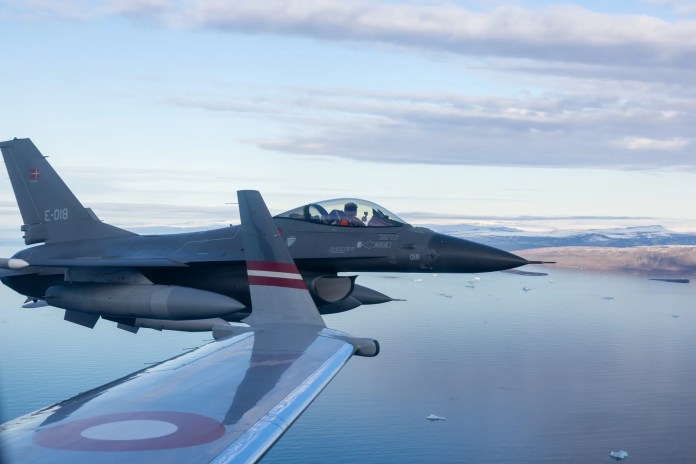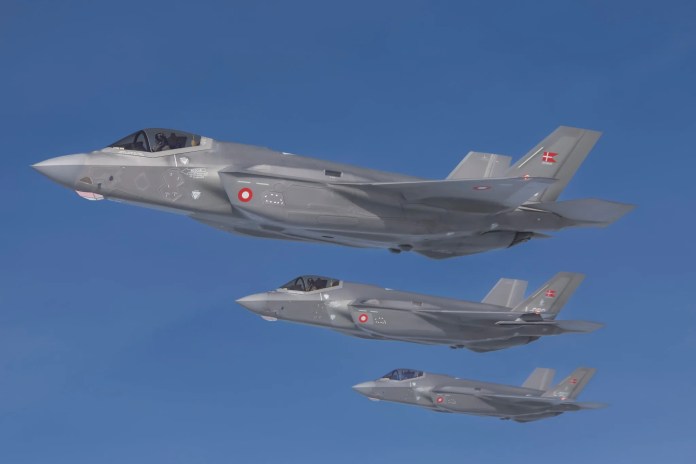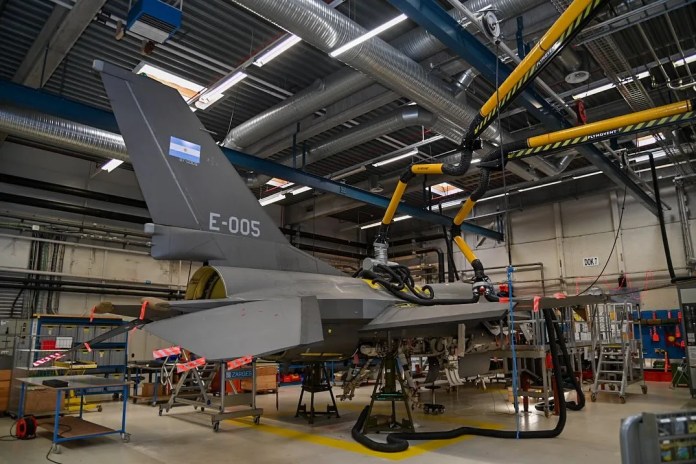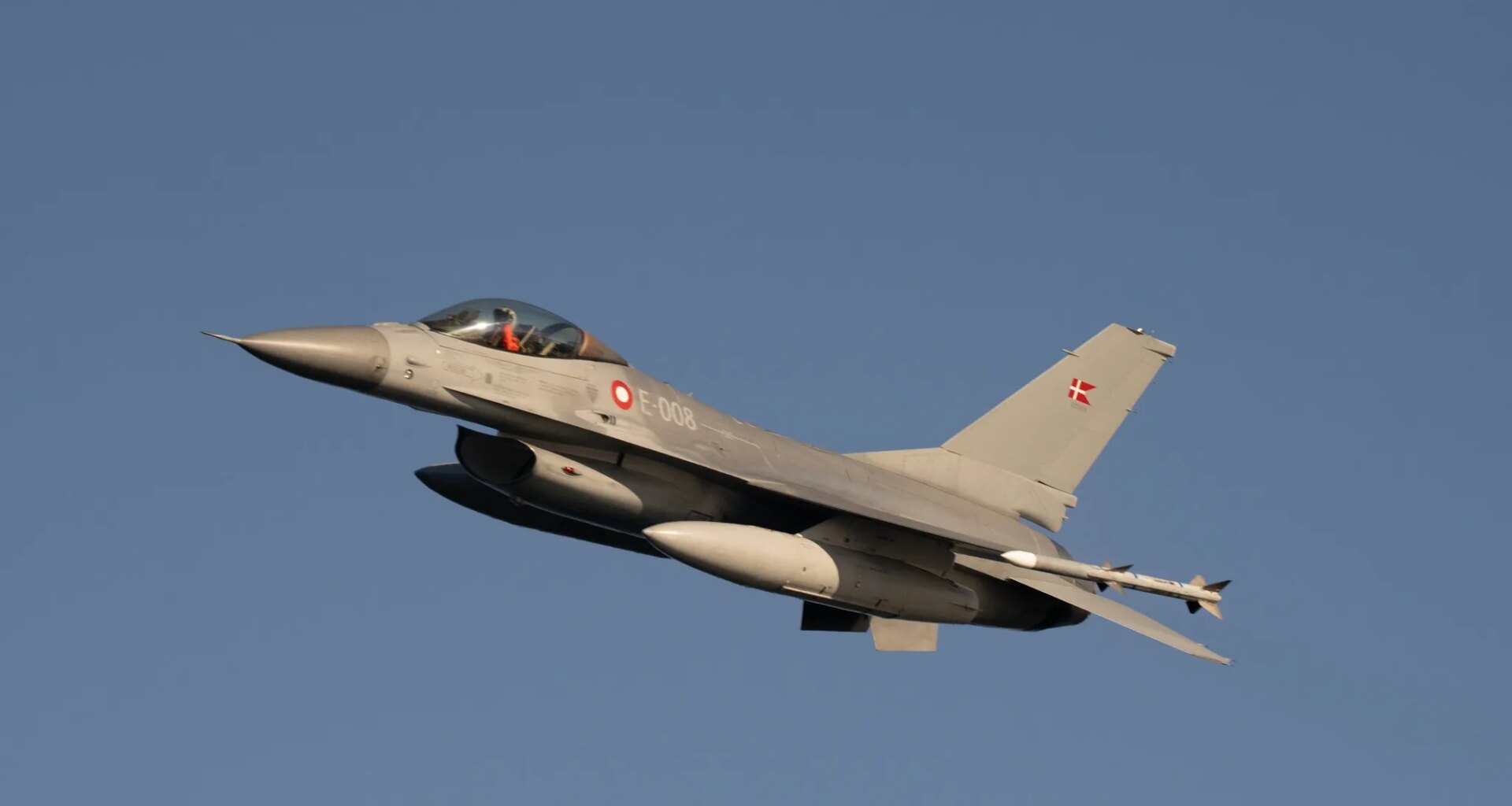With their upcoming retirement and transfer to Argentina, which is set to receive its first aircraft in flying condition soon, Royal Danish Air Force F-16 fighters are currently conducting what stands as one of their final deployments in Greenland. Specifically, they are leading Exercise Arctic Light 2025, a combined activity with other NATO forces in the challenging Arctic environment, running until September 19.

This new edition of Arctic Light involves the participation of at least 550 personnel. Denmark’s Armed Forces have deployed two F-16 fighters, along with the frigate Niels Juel and two EH-101 (AW101) helicopters. Not only are all three branches of the Danish Armed Forces involved, but also special operations forces and the Danish Home Guard. In parallel, the exercise includes the French Navy ship FS Garonne, an Airbus A330 MRTT from the French Air and Space Force, and mountain infantry equipped with drones. Additional contributions come from the Swedish and Norwegian Home Guard, as well as observers and personnel from Germany.
According to reports, the Danish F-16s are conducting sorties from Kangerlussuaq and Pituffik space bases, supported by French tanker aircraft. The operation is carried out under the direction of the Arctic Joint Command and in coordination with the Government of Greenland. Earlier this month, the Danish Ministry of Defence stated that the goal is “to strengthen the operational readiness of the Danish Armed Forces and NATO in Greenland and its surrounding areas.”

For his part, Major General Søren Andersen, Commander of the Arctic Joint Command, declared: “With Arctic Light, we strengthen Greenland’s overall preparedness for emergencies and train the Danish Armed Forces’ ability to face a wide spectrum of threats in cooperation with Greenlandic authorities and international partners.”
About Exercise Arctic Light 2025
Exercise Arctic Light 2025 is part of Denmark’s broader strategy to increase its military presence in the Arctic. In August, PASSEX exercises were held with France, and Denmark also participated in Canada-led Operation Nanook Tuugaalik. The Nordic country is also advancing its Arctic Basic Training Program in Greenland.
This year, the exercise—designated as a SNAPEX (Scheduled Notice Activity Exercise)—reflected the growing focus on operational readiness in the region. Given the evolving security situation in the area, the exercise sought to further develop the Arctic Joint Command’s ability to host NATO and partner units, enabling them to take part in operational missions in the Arctic.

As highlighted by the Danish Defence Ministry, a key component this year has been civil-military cooperation, as the exercise includes large-scale search and rescue drills off the coast of Greenland. These maneuvers test coordination between military forces and Greenlandic authorities to improve preparedness for crises in the North Atlantic and Arctic region. At the same time, participating forces aim to strengthen their ability to respond to threats through training such as ship boarding, critical infrastructure surveillance, and the deployment of ground drones in Arctic environments.
The F-16’s Retirement: A Symbolic Closure in Greenland and Their Future in Argentina
The deployment of F-16s in Arctic Light 2025 not only strengthens NATO’s defensive posture in the North Atlantic but also marks the end of an era for the Royal Danish Air Force. Before being transferred to Argentina and Ukraine, these fighters are completing their final missions in one of the most demanding environments for military training.

The transition to the F-35A entails the progressive retirement of the F-16, which still carries out key roles such as those currently being performed in Exercise Arctic Light 2025. It should be recalled that in January this year, Denmark received three new F-35A stealth fighters from the United States, bringing its fleet to 17 aircraft. In total, the country is acquiring 27 aircraft, with deliveries set to conclude by 2027. In the meantime, Denmark is advancing with the transfer of its F-16s to Argentina and Ukraine.
As for Argentina, the country will incorporate 24 F-16AM/BM MLU as part of a strategic agreement signed with Denmark. In April this year, Argentine Defence Minister Luis Petri oversaw the readiness of the first six fighters at Aalborg Air Base, which are set to arrive in the country in December. A memorandum of understanding was also signed to deepen bilateral cooperation, including technology transfer and training.

By June, Petri made another official visit to the Nordic country to sign a Memorandum of Understanding with his Danish counterpart, Troels Lund Poulsen, to strengthen strategic cooperation between the two nations. That same month, the first images emerged of some of the six F-16AM/BM MLU fighters that will arrive in Argentina, projected to include four two-seaters and two single-seaters.
As part of this process, throughout September delegations from Top Aces, Denmark’s Defence Acquisition and Logistics Organization (DALO), and the Air Force Security Assistance Training (AFSAT), along with members of the F-16 Program, visited Argentina to inspect facilities, infrastructure, and Argentine Air Force (FAA) procedures. For now, pilots continue training in Argentina, with further training planned in the United States and Denmark starting in October, as confirmed by Argentina’s Ministry of Defence.
